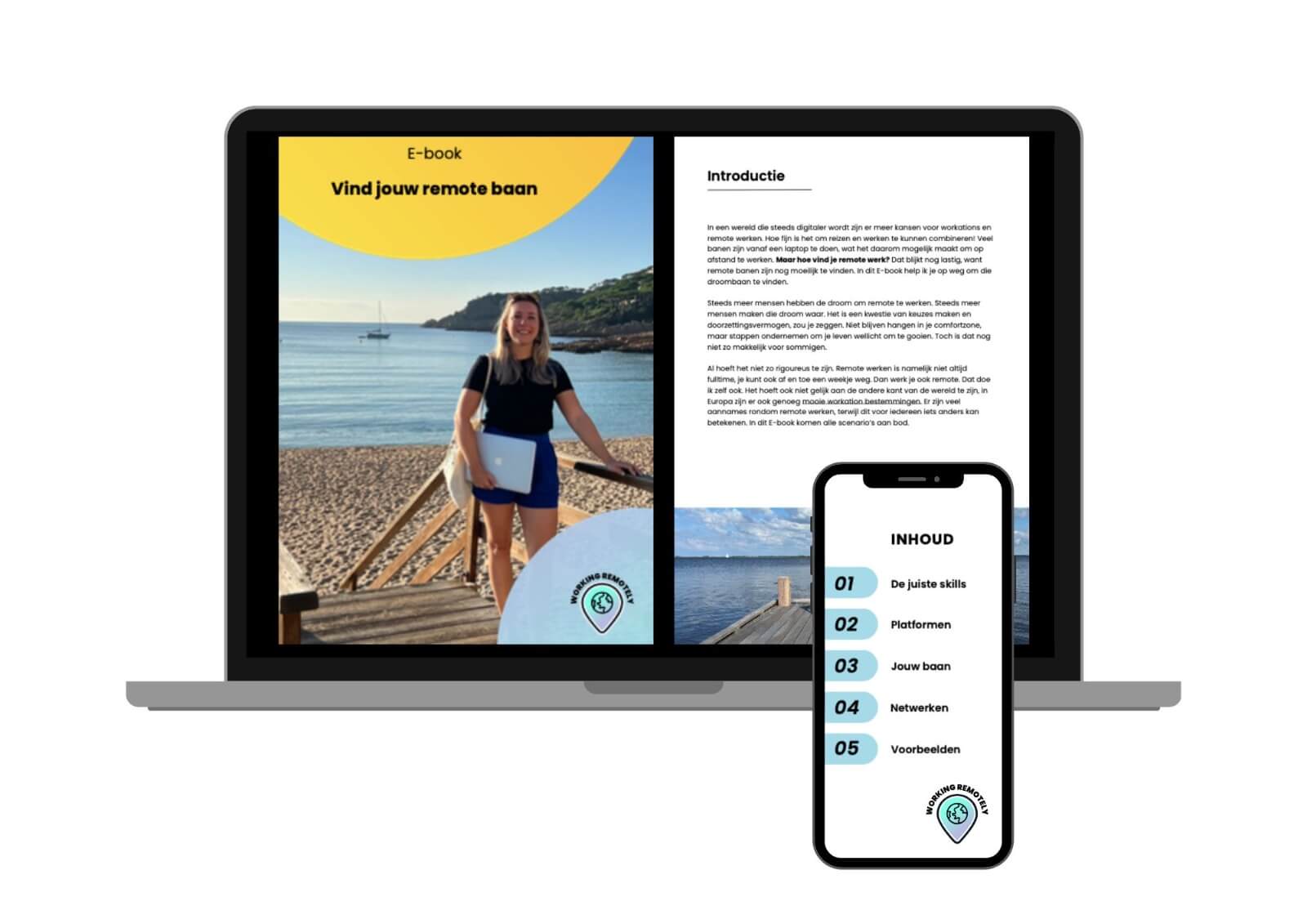And suddenly you know: you’re going to become a freelancer and work nicely from under that palm tree! Maybe it goes like that for some people, but not for me. What I did know: I want to be able to work and live where I want and when I want. And I mastered a trade: marketing and copywriting, so the logical choice was to go freelance, because that brings with it the freedom to do so.
But with that freedom of freelance life also comes responsibility. Because working as a freelancer is one thing, but freelancing remotely is another. I already freelanced from South Africa, Thailand, Albania and Morocco, so I’ve already learned a thing or two and am happy to share my story and tips with you!
Gain relevant work experience
A quick look back to 2018, just before I started freelancing. I was working at an advertising agency, having also worked in marketing departments at companies for years. And that might be the first, unpopular tip I give to people who want to become self-employed: get some work experience before you take the plunge into self-employment. For one thing, it’s nice for you to really know what you’re talking about when you start peddling yourself to potential clients; after all, you’re speaking from experience. And on the other hand, it is also an added value for your clients to know that although you may work alone, you also have years of experience and knowledge in your pocket. When I took the plunge into self-employment in 2019, I brought 9 years of knowledge, life experience and self-confidence to take on this adventure.

But how do you get customers from abroad?
Of course, it is a dream to work for a Dutch client while you are enjoying your time abroad. If only because you can then charge Dutch rates and earn well, while you probably have lower living costs at your destination. Or you can choose to work fewer hours, because you need less money to live on in your paradisiacal place. But scoring that ideal job is not so easy.
LinkedIn is one of your best friends when looking for assignments as a self-employed person. It is the way to put yourself in the spotlight with Dutch companies while sitting under that palm tree yourself. Of course, there are also paid online platforms where you can find freelance assignments, but my experience is that it is difficult to stand out among all the other freelancers competing with you. It can be done, but the competition is high and therefore the fees for the assignments are somewhat lower.
What you can do as a freelancer to get noticed on LinkedIn?
- Create a strong and clear LinkedIn profile that makes it immediately clear what you do.
- Post content regularly about projects you have done, skills you have or experience you have gained, for example.
- Actively search for valuable pages and connections and start following them. You never know what it will bring you! Bonus tip: introduce yourself nicely by sending new connections a DM. Don’t make it a life story, keep it short and simple.
- Don’t just go on LinkedIn because you need work at the time, continuously build your online visibility and increase your network over the years. You’re going to need that network badly if you want to work remotely and need assignments.
Bringing in assignments from abroad
I quickly found that making contacts comes pretty easily to me. Right from the start I tell everyone who wants to hear what I do and what I can offer companies. Both online and offline, so sometimes at a birthday party or networking event. Nine times out of ten it did not lead to anything, until someone had a business or an uncle or neighbor with a business who could use me. And after the first call came (and often comes) the question, “could you just drop by our place sometime?” And no, that was not going to happen if I had decided to spend the winter in Greece, Thailand or South Africa.
Sometimes I could talk like a braggart and convince the client that it didn’t matter where I did my work, but more often clients would still drop out. Not a nice story to hear perhaps if you are about to start a self-employed career to work overlooking a bounty beach, but reality.


Therefore, pay close attention to building a network, as well as relevant work experience. It is also a lot easier to start the conversation with an existing client about working from abroad, than to find a new client who is open to this. And you may have to settle for a few weeks of remote work instead of 6 months, as a concession with your client. Sometimes you can’t have it all.
I also went away for a month once where I actually preferred to travel for 3 months. But it was a fairly new client and they were hesitant about working remotely. In addition, I went to their office for a meeting a few days before I left and also right after I got back. As a result, there was only 1 meeting halfway through my trip online, which was fine. That compromise worked for both of us. By the way, this also keeps it easy for the tax authorities and you don’t make things unnecessarily difficult for your client, as that legal story gets a lot more complicated when you are abroad for a long time.
Client in as a freelancer? Here’s how to keep it in!
But in the end it is the perseverer who wins, and so it was with me. I remember very well that I told a potential client that I was going to spend the winter in South Africa, a message I delivered with shaky knees because I needed the job very badly. But my well-prepared pitch and carefully crafted project approach on paper had worked: they had enough confidence in me to take the job!

5 practical tips for remote freelancers
- Put clearly on paper what you will be doing and what your client should expect from you. A good idea anyway, but especially if you are working from abroad.
- Schedule regular (video) consultations: it helps maintain a good rapport with your client and is a nice way to discuss the work. By the way, make sure you have a professional setting for your video consultation; calling in from a crowded terrace does not give your client the confidence in you that he is looking for. Go to a coworking or stay at home to do this part of your work as well as possible.
- Be flexible to your client. If you are in a different time zone, adjust to the Dutch times, even if it means that you have to meet at 7 p.m. or 7 a.m., for example. I worked from Thailand for 5 months that way, with my client only finding out after I was back in the Netherlands that I had been away at all. Just the way I wanted it!
- Also, just explain what remote working means, not everyone is familiar with that term yet. No, you are not just lounging on the beach and yes, you are just working from a proper workstation.
- Ask about your client’s fears/concerns; I have found that 9 times out of 10, they are fine to eliminate.
Working remotely as a freelancer? It really is possible!
Is it easy? Is it for everyone? No, it isn’t. Is it worth it if it succeeds? Abso-fucking-lutely yes! I really did shed a tear during my first real remote working trip to Cape Town. I had succeeded: working for myself from a beautiful other country! And my belief is that if you really want it, you can make it work. For me, freelancing from a beautiful, foreign destination was all I could think about when I was still employed and anything else was simply not an option. I heard many no from leads, saw many skeptical looks around me, but they disappeared like snow in the sun when I succeeded. And if I can do it, so can you!
Are you feeling the travel jitters as you read this and are you a freelancer or thinking about becoming one? Then be sure to download
More tips on working from abroad as a freelancer
Van loondienst naar volledige vrijheid: Zo word je Virtual Assistent
Leven en werken als digital nomad – met een camper, kat en laptop








